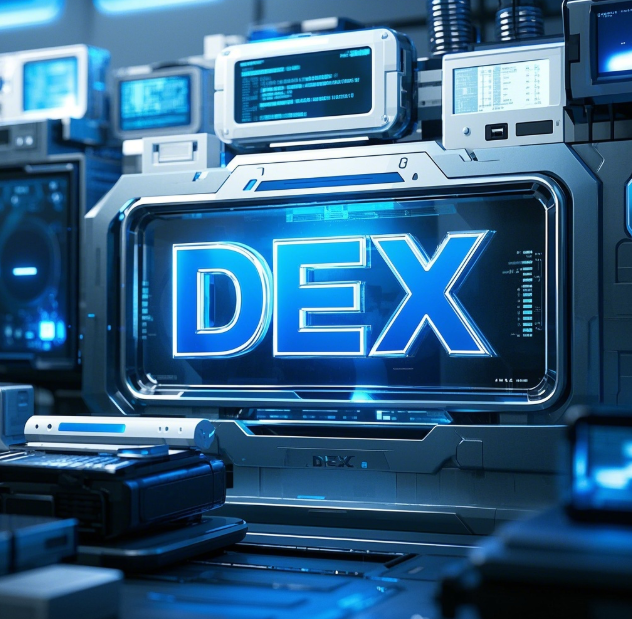When "Black Boxes" Become Transparent Fishbowls
The 2022 FTX collapse exposed the fatal flaws of centralized exchanges (CEXs)—user funds could be misused, trading data was opaque, and prices could be manipulated behind the scenes. At the heart of these issues lies a fundamental contradiction: users' wallets don’t truly belong to them. The rise of decentralized exchanges (DEXs), powered by blockchain technology, has rewritten the rules of trading, particularly through their liquidity mechanisms, reshaping our understanding of "fairness."
So, how exactly does DEX liquidity work? And what makes it fairer than CEXs? Let’s break it down.
1. The Liquidity Revolution: From "Human Control" to "Math Rules"
Traditional CEX liquidity relies on a "whale game." Giants like Binance and Coinbase employ professional market-making teams to maintain order book depth through manual pricing and subsidies. The problem? Market makers and exchanges often collude, leaving retail traders at a perpetual disadvantage—like in high-frequency trading "stop hunts," where whales and platforms manipulate prices to liquidate positions.

DEXs flip the script. Take Uniswap’s constant product formula (x*y=k): prices are algorithmically determined, and anyone can become a liquidity provider (LP) by depositing funds into pools to earn fees. This system has two game-changing advantages:
Prices are code-driven, eliminating manual adjustments and reducing manipulation.
Liquidity is crowd-sourced, with risks and rewards transparently recorded on-chain—no backroom deals.
A real-world example: In 2025, a trader on a CEX leveraged a $270M ETH position, then withdrew collateral, triggering a cascade of liquidations. On DEXs, smart contracts auto-liquidated positions transparently, avoiding the "human intervention" scandals plaguing CEXs.
2. The Three Pillars of Fairness: Transparency, Anti-Manipulation, and Open Access
1. On-Chain Transparency: Data for All
Every DEX trade, pool balance, and fee distribution is recorded on-chain. For instance, Raydium’s pool changes are publicly verifiable via blockchain explorers. This transparency ensures:
Tamper-proof records: Unlike CEXs that fake trading volumes, DEX transactions require network consensus.
Auditable history: When Raydium surpassed Uniswap as the top DEX in 2025, its 27% market share was proven on-chain, not just claimed.

2. Algorithms vs. Human Nature
CEX order books are psychological battlegrounds—whales can crash prices with spoofed orders. DEXs’ automated market makers (AMMs) smooth volatility:
Controlled slippage: Deeper pools minimize price impact for large trades.
Arbitrage as a correction tool: Price gaps between DEXs and CEXs are instantly exploited, aligning markets.
3. Democratizing Participation
CEXs favor institutional market makers with VIP perks (lower fees, faster APIs). DEXs level the field:
LP for everyone: Deposit $100 to earn fees alongside whales.
Modular strategies: Platforms like Balancer V2 let users customize pools, even for advanced tactics like volatility harvesting.
3. DEX Evolution: From Bootstrapping to Cross-Chain Dominance
Early DEXs faced a "chicken-and-egg" liquidity problem. Two innovations solved it:
1. Liquidity Mining: Incentivizing Growth
Compound’s 2020 "yield farming" model was refined by DEXs like dYdX, where MegaVault pools distribute 50% of revenue to LPs. Users earn triple rewards: trading fees, funding rate differentials, and token incentives—turning liquidity pools into profit engines.
2. Cross-Chain Aggregation
With Solana and Avalanche’s rise, DEXs expanded beyond single chains. Raydium leveraged Solana’s low fees to process 5x Ethereum’s daily volume in 2025, while projects like edgeX used ZK-Rollups to unify multichain liquidity.
4. Reality Check: Are DEXs Flawless?
Despite their fairness edge, DEXs face hurdles:
UX complexity: Wallet connections and gas fees deter newcomers.
Fragmented liquidity: Price disparities across DEXs require aggregators (e.g., 1inch) for optimal routing.
Regulatory gray zones: Anonymity clashes with compliance, as seen in the SEC’s scrutiny of Uniswap.
Smart contract risks persist too—the 2023 Curve hack showed code isn’t infallible. Future DEXs must balance speed, security, and regulation.
DEX liquidity represents a "code is law" revolution, replacing financial gatekeepers with math and transparency. While challenges remain—from technical risks to regulatory battles—cases like MegaVault’s profit-sharing and cross-chain breakthroughs prove that when liquidity becomes a public good, not a weapon, a fairer system emerges.
For users, DEXs aren’t just trading venues—they’re democratic arenas. Every deposit votes for decentralization, and every trade reshapes finance.
















No comments yet